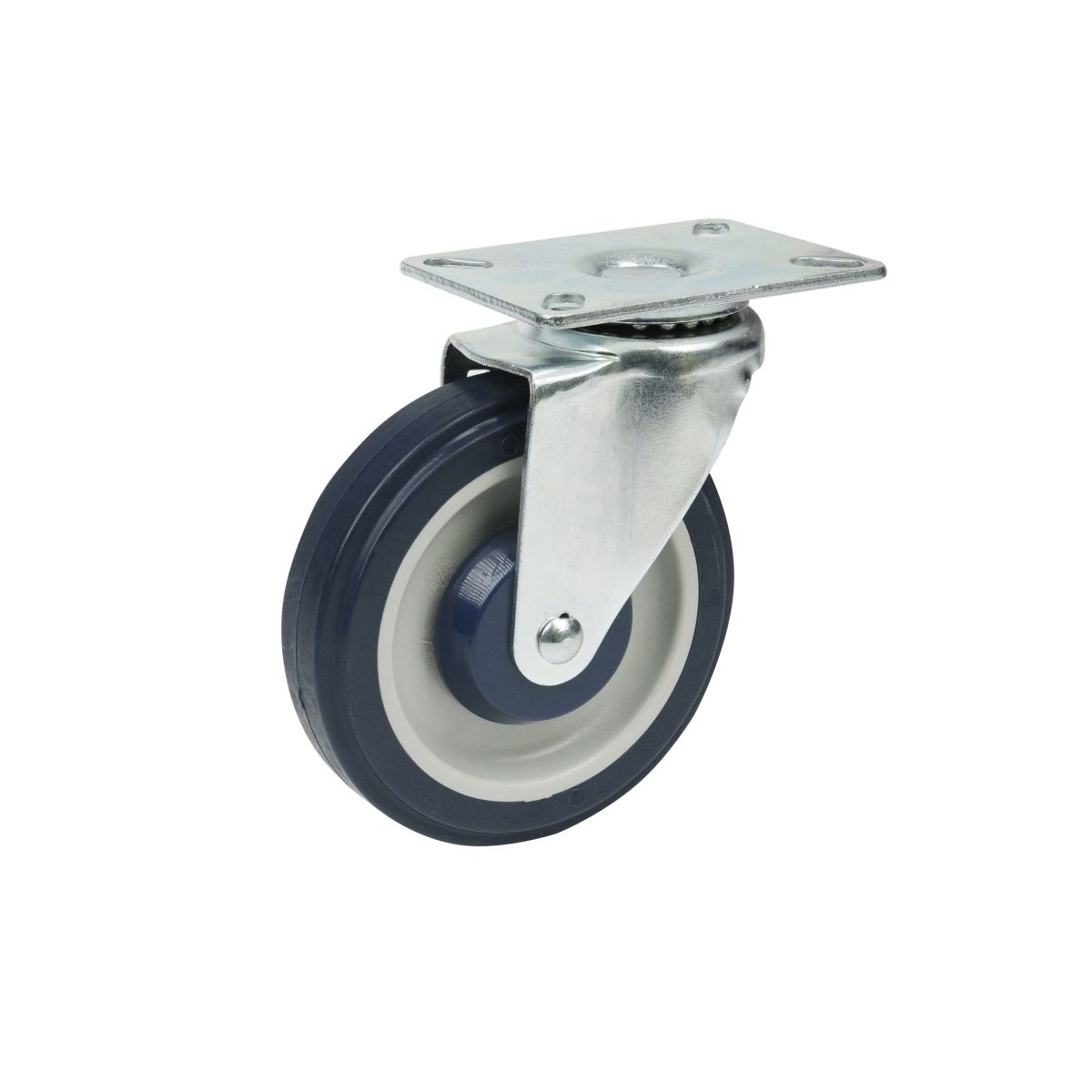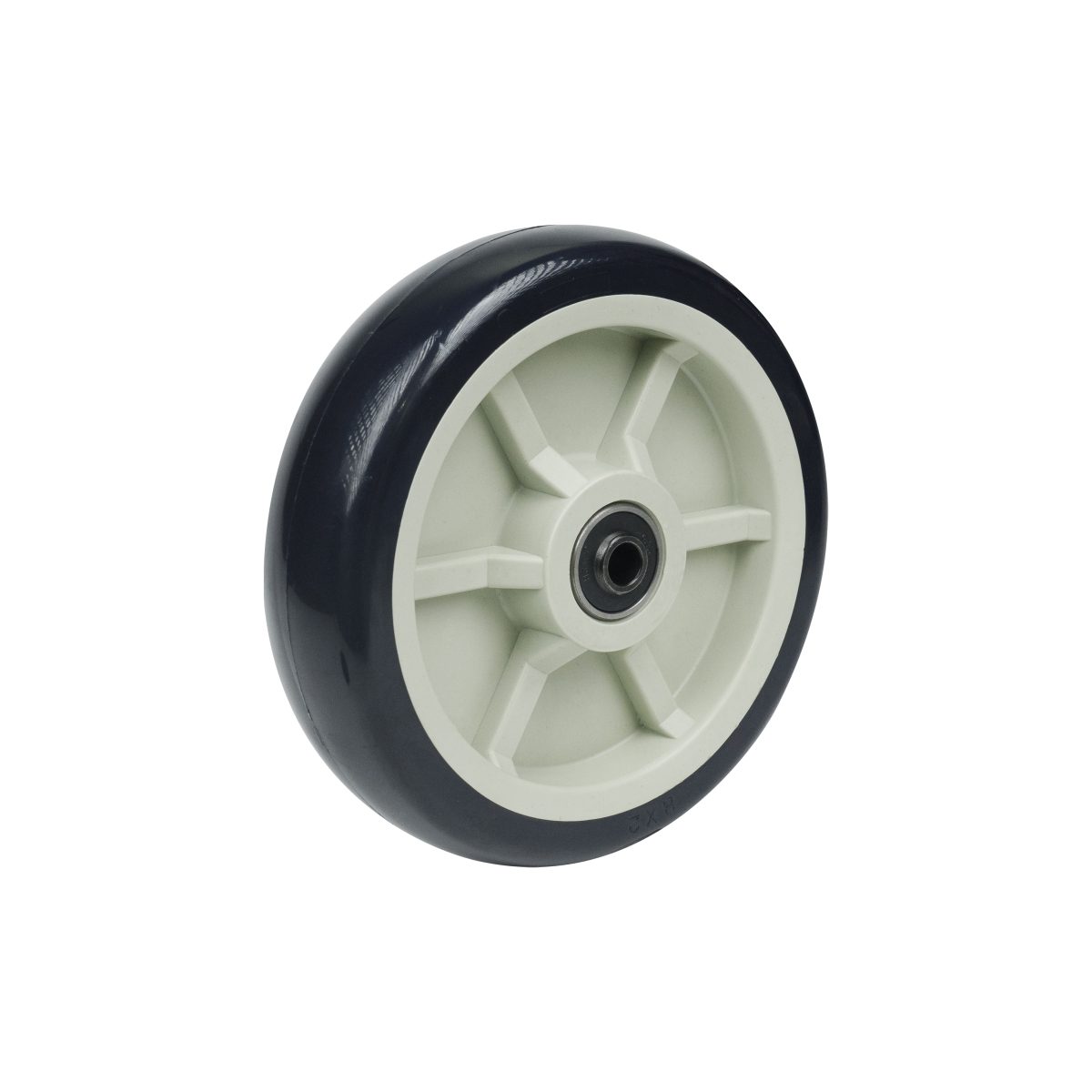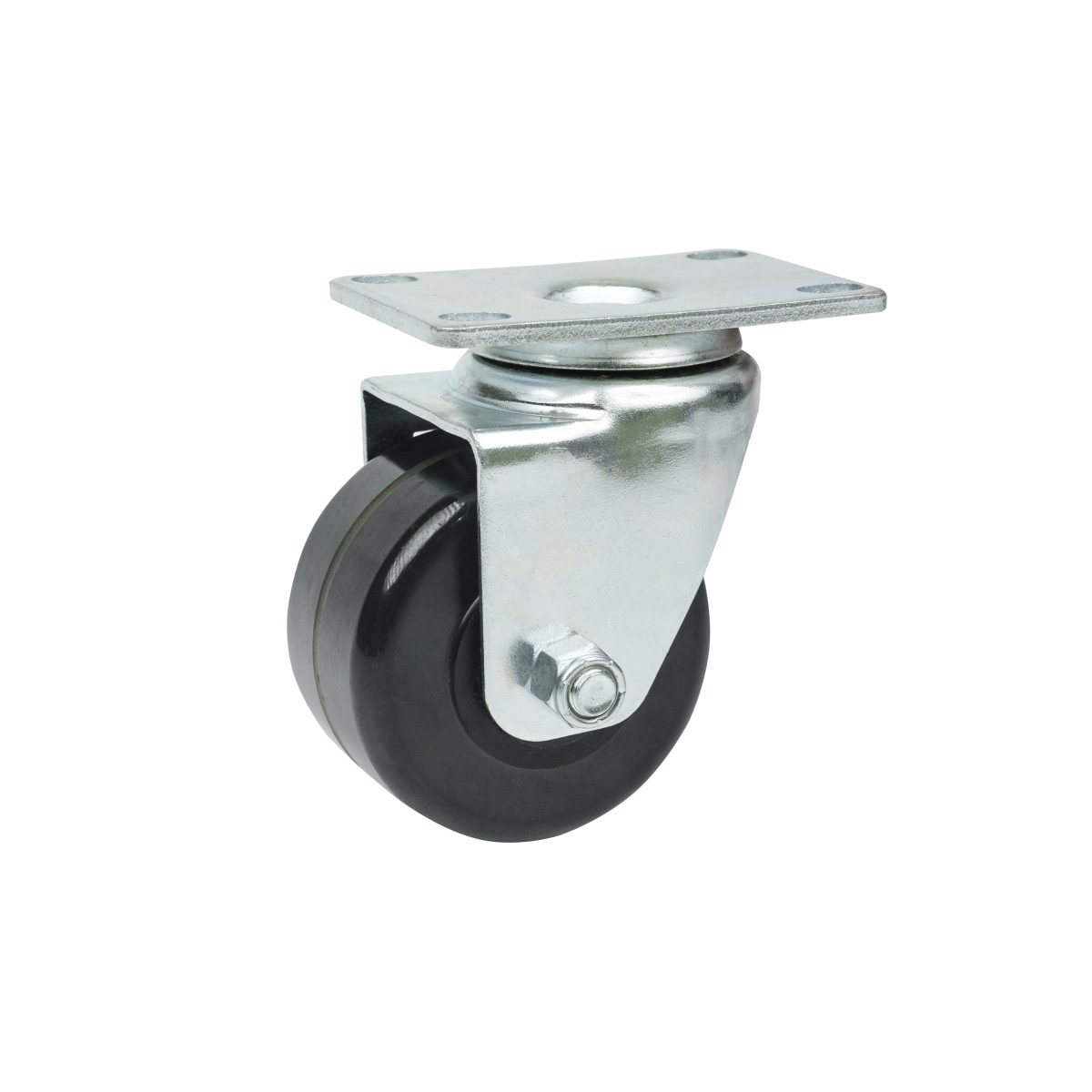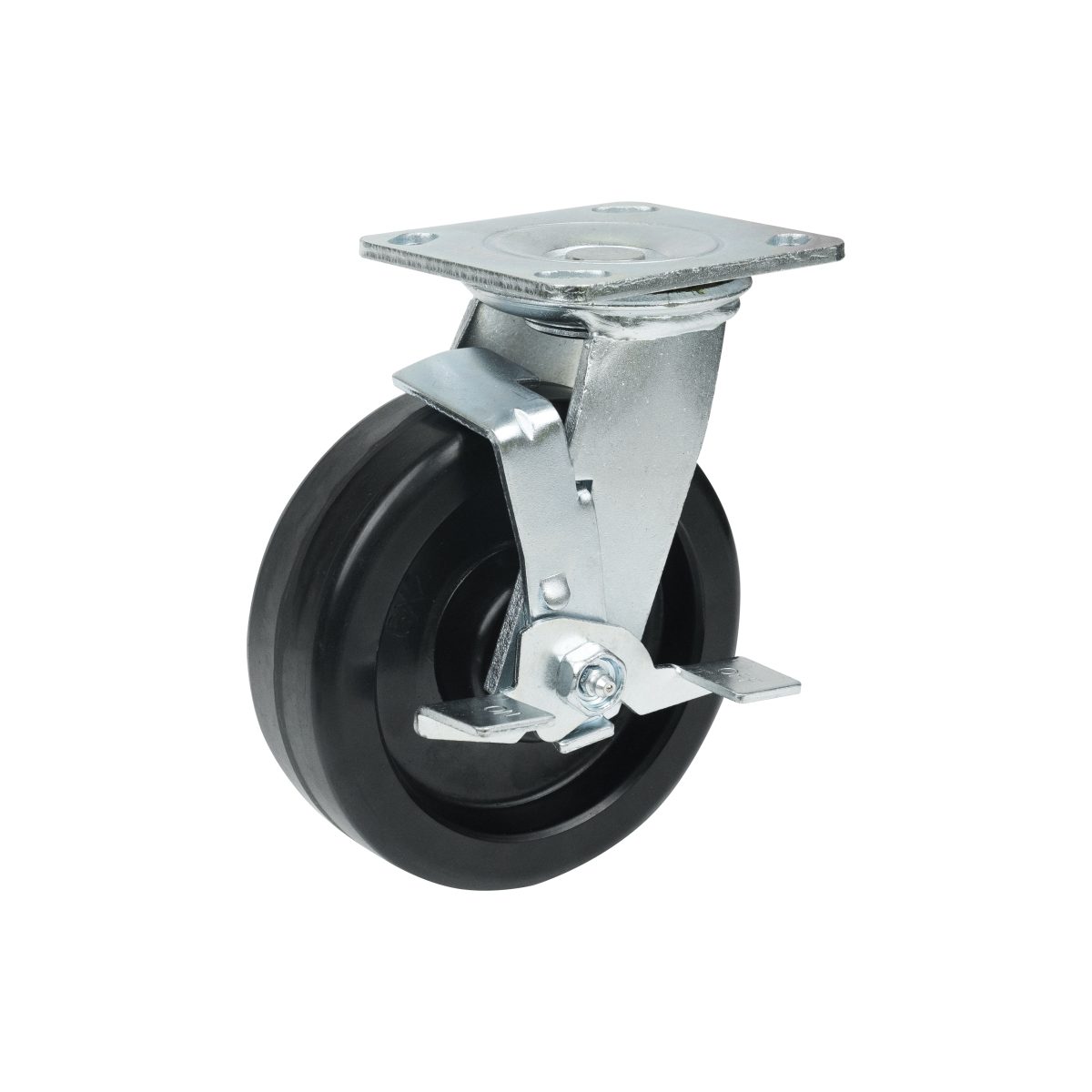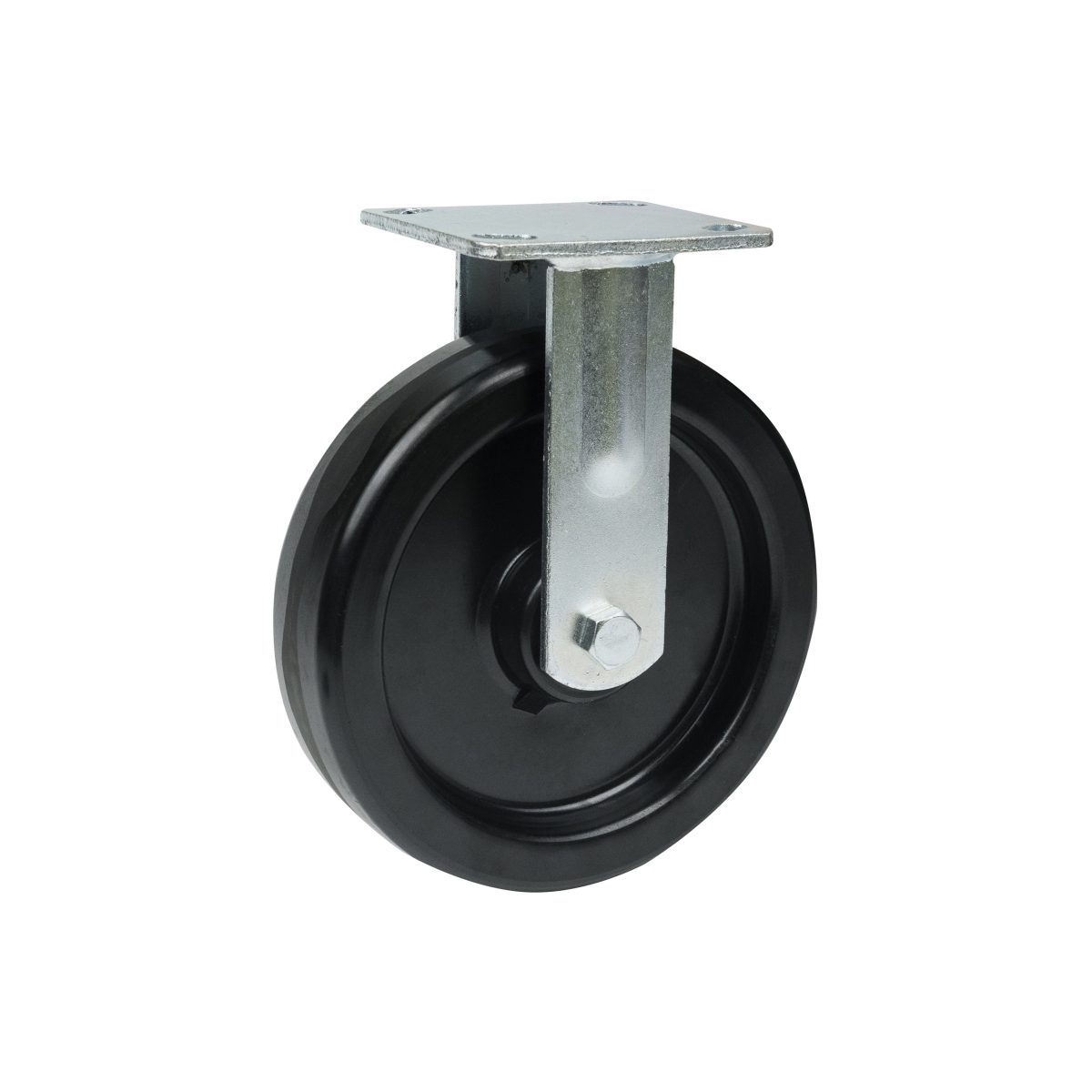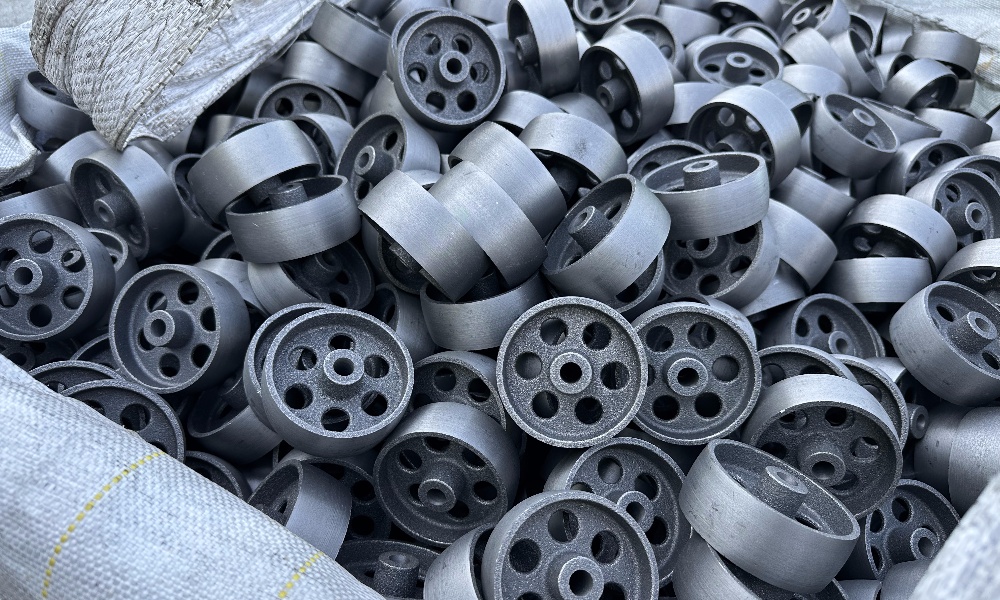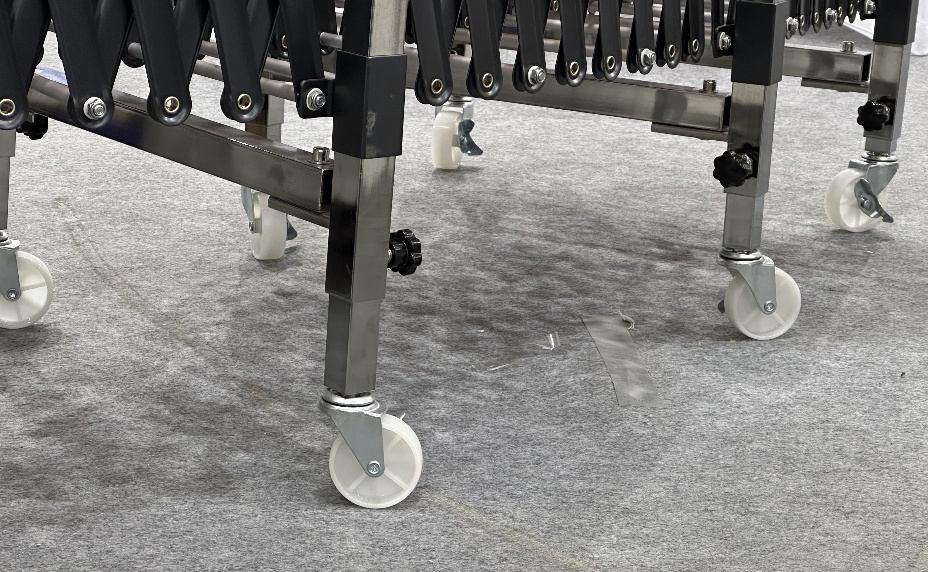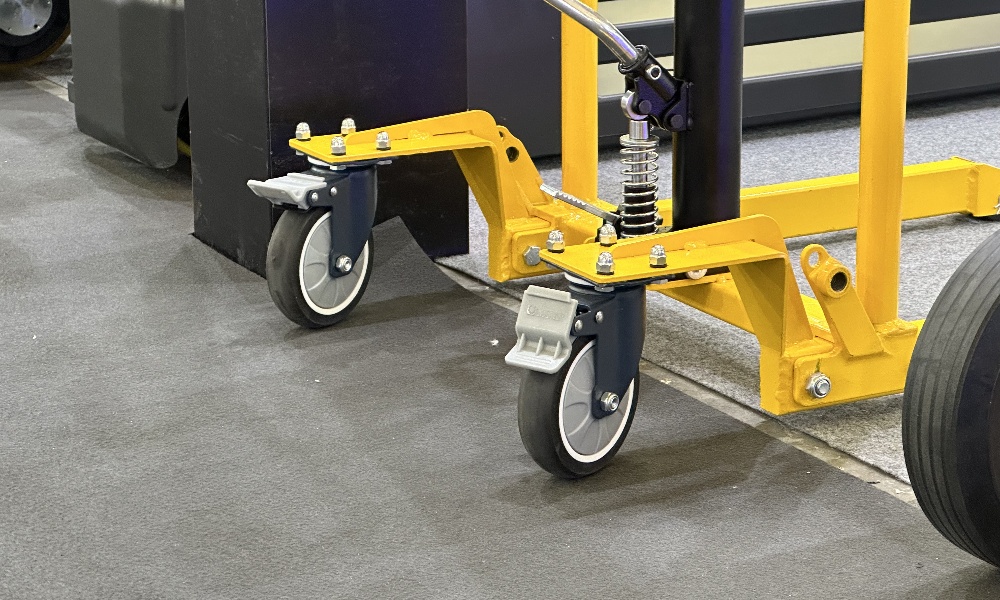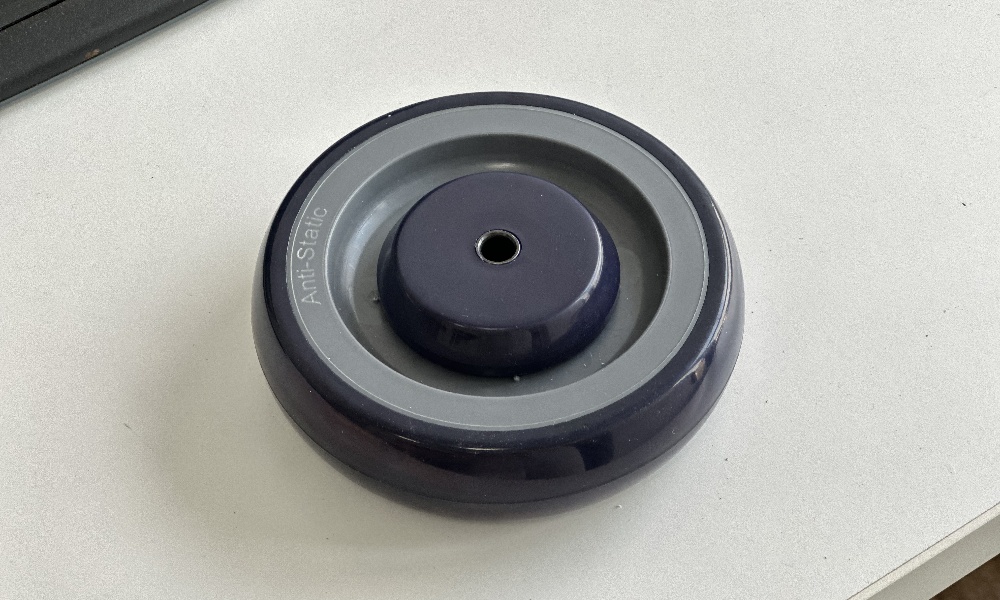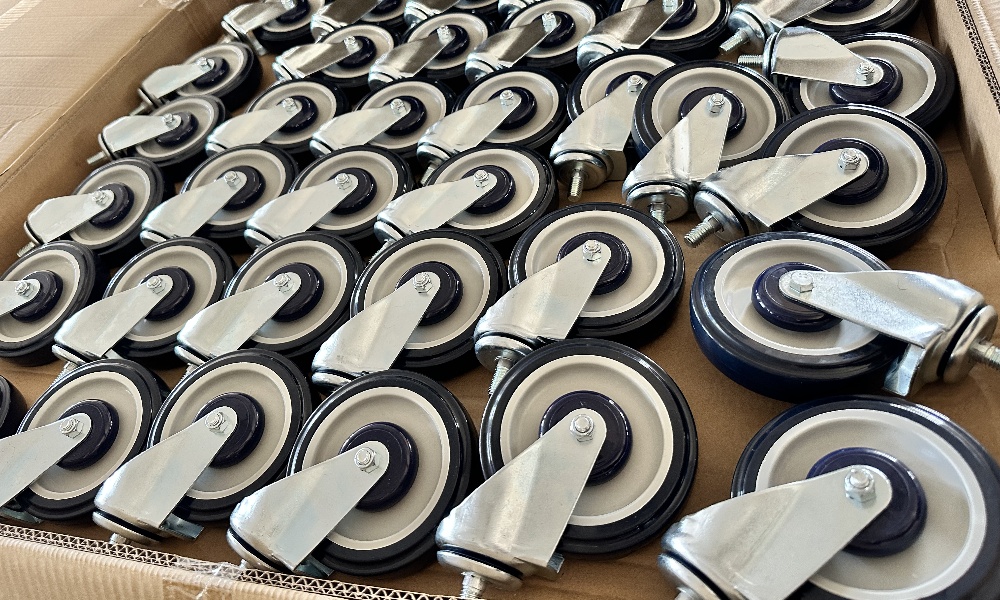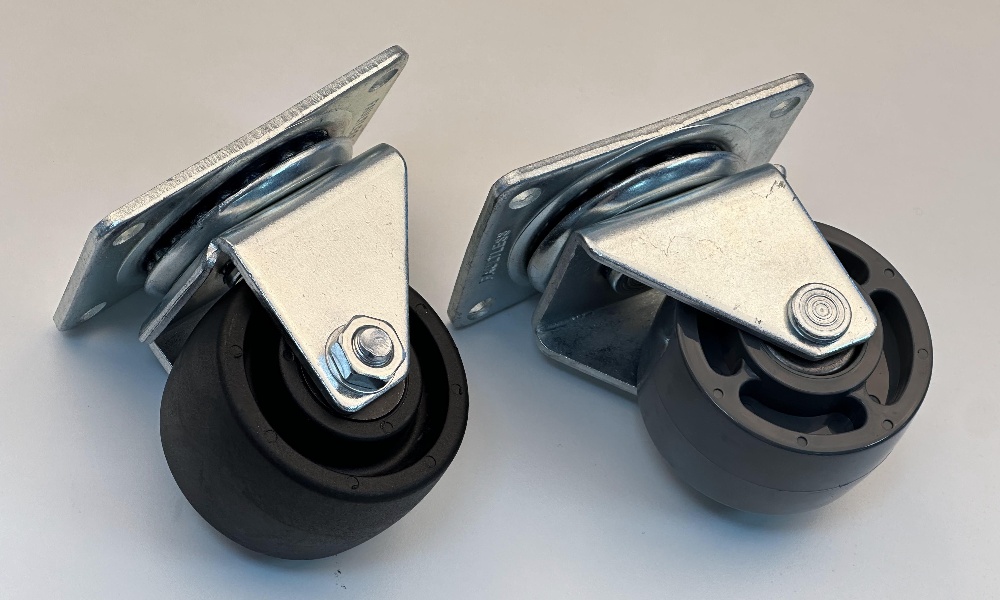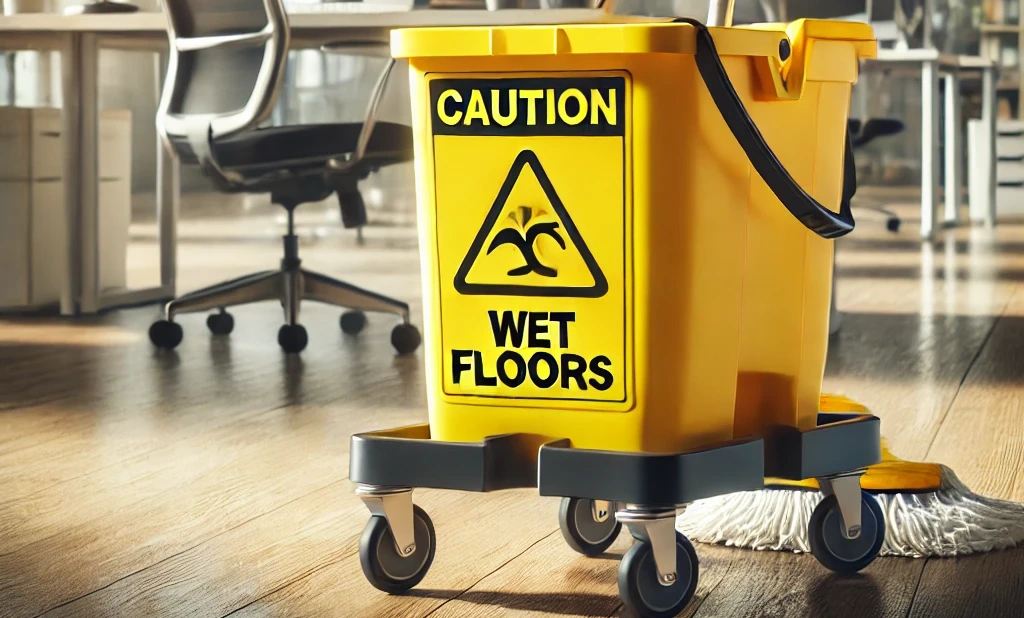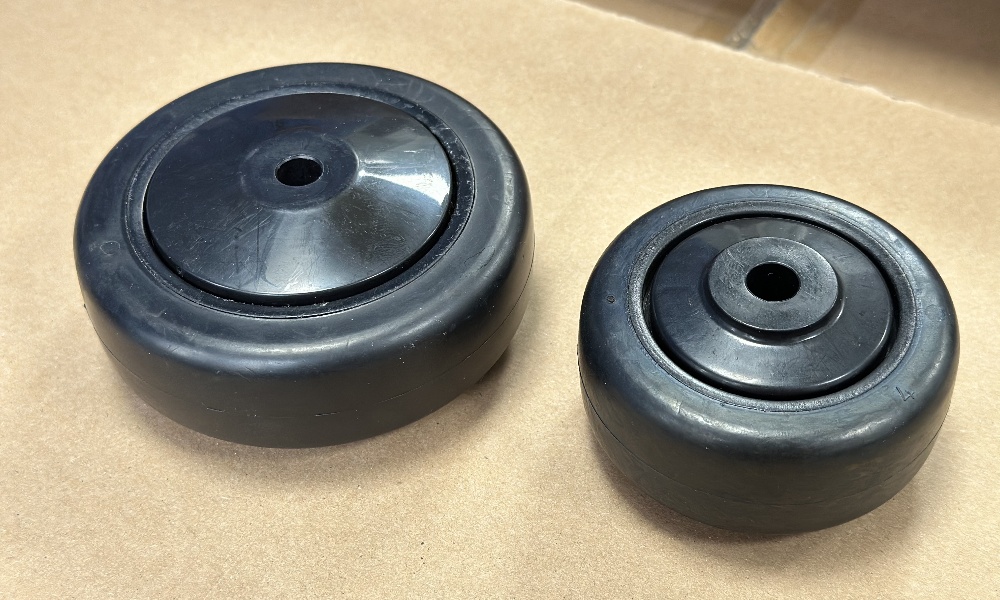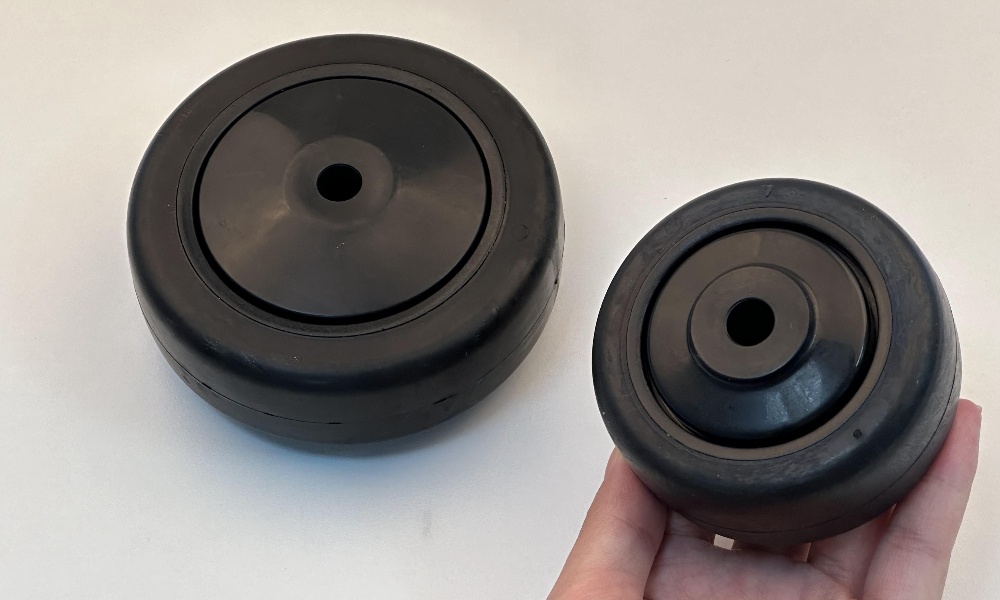Polyurethane or Phenolic Casters: Which is Right for You?
Choosing the right caster for your equipment is essential to ensure safety, efficiency, and longevity. In many industrial and commercial settings, polyurethane and phenolic casters are two of the most popular choices due to their durability and specific performance characteristics. However, understanding the strengths, weaknesses, and ideal applications of each can make selecting the right caster easier and more effective.

Understanding Polyurethane Casters
Polyurethane casters are made from a flexible yet highly durable polymer material, known for its ability to carry heavy loads while reducing noise and protecting floors. This material is often bonded to a metal core, enhancing the caster’s durability and load-bearing capacity.
Advantages of Polyurethane Casters
-
Floor Protection
Polyurethane casters are known for their non-marking properties, making them ideal for environments where maintaining pristine floors is essential. They distribute weight more evenly than harder materials, which reduces floor wear and potential scuffing.
-
Noise Reduction
Unlike harder materials, polyurethane absorbs some of the energy as it rolls, which reduces the overall noise produced when moving heavy equipment. This makes them particularly useful in environments where noise reduction is prioritized, such as hospitals, schools, and offices.
-
Higher Load Capacity
Polyurethane casters typically have a higher load-bearing capacity compared to standard rubber casters, making them suitable for heavy-duty applications, especially in industrial settings where larger machinery or equipment is used.
-
Resistant to Chemicals and Abrasions
Polyurethane is resilient to various chemicals, oils, and solvents, making it a popular choice in settings where exposure to harsh substances is likely, such as in automotive and chemical industries. Additionally, it offers good abrasion resistance, meaning it won’t wear down quickly even with repeated use.
-
Temperature Resistance
Polyurethane performs well in moderate temperature ranges, generally between -30°F to 180°F. However, it may not be suitable for extreme temperatures, as excessive heat can soften the material.
Ideal Applications for Polyurethane Casters
Given these qualities, polyurethane casters are commonly used in environments where noise reduction, floor protection, and high load capacity are crucial. Common applications include:
- Warehouses and manufacturing facilities
- Hospitals and healthcare facilities
- Retail and grocery stores
- Food service and catering equipment
Polyurethane Wheels Provided by TARGET Casters |
|||||||
Part name |
TARGET Number |
Material |
Wheel Diameter |
Wheel Tread Width |
Assembly Hole Diameter |
Bearing |
Load Capacity |
| 2″Polyurethane Wheel | 33W PU05001 | Polyurethane | 2″ | 0.79″ | 9mm | Dual Precision Ball Bearings | 176lbs |
| 3″Polyurethane Wheel | 33W PU07501 | Polyurethane | 3″ | 0.87″ | 8mm | Plastics Bushing | 250lbs |
| 4″Light Duty Polyurethane Wheel | 33W PU10001 | Polyurethane | 4″ | 1-1/4″ | 8mm | Dual Precision Ball Bearings | 290lbs |
| 5″Light Duty Polyurethane Wheel | 33W PU12501 | Polyurethane | 5″ | 1-1/4″ | 8mm | Dual Precision Ball Bearings | 290lbs |
| 6″ Medium Duty Polyurethane Wheel | 33W PU15001 | Polyurethane | 6″ | 2″ | 12.8mm | Dual Precision Ball Bearings | 880lbs |
| 8″ Heavy Duty Polyurethane Wheel | 33W PU20001 | Polyurethane | 8″ | 2″ | 12.8mm | Dual Precision Ball Bearings | 990lbs |
| 8″ Heavy Duty Needle Roller Bearings Polyurethane Wheel | 33W PU20002 | Polyurethane | 8″ | 2″ | 13.3mm | Precision Needle Roller Bearing | 990lbs |
Understanding Phenolic Casters
Phenolic casters are made from a compressed phenolic resin that creates a hard, dense, and lightweight material. This composition provides a very different set of characteristics from polyurethane casters, making phenolic casters well-suited for different environments and uses.
Advantages of Phenolic Casters
-
High Load Capacity
Like polyurethane, phenolic casters can handle substantial weight loads. The high-density composition allows these casters to bear significant weight without the risk of deformation, which is essential in heavy-duty industrial settings.
-
Resistant to Heat and Cold
Phenolic casters can withstand higher temperatures than polyurethane, often tolerating heat up to 300°F. This makes them suitable for environments with extreme temperature demands, such as bakeries, foundries, or autoclaves.
-
Cost-Effective
Phenolic casters tend to be less expensive than polyurethane options, making them a budget-friendly choice for applications that don’t require the additional benefits of noise reduction or floor protection.
-
Resistant to Chemicals and Oils
Phenolic casters are naturally resistant to many chemicals, oils, and grease, making them useful in environments where exposure to these substances is frequent. However, they can be more brittle than polyurethane and are more susceptible to chipping.
-
Limitations of Phenolic Casters
One major drawback of phenolic casters is their potential to damage certain types of flooring. They are much harder than polyurethane and can leave marks or even cause dents, especially on soft or delicate floors. Additionally, phenolic casters generate more noise when rolled across surfaces, which may be an issue in noise-sensitive environments.
Ideal Applications for Phenolic Casters
Due to their heat resistance, affordability, and high load capacity, phenolic casters are commonly used in:
- High-temperature environments like bakeries, kitchens, and autoclaves
- Heavy-duty manufacturing facilities
- Areas where floors are either protected or not a concern
Temperature Performance Table of Phenolic Casters |
||
| Temperature Range(℃) | Suitable Environments | Performance Characteristics |
| -40 to -20 | Cold storage facilities, freezers | Maintains flexibility and strength, good grip. |
| -20 to 0 | Refrigerated transport, warehouses | Stable performance, resistant to moisture. |
| 0 to 50 | General warehousing, manufacturing | Good load-bearing capacity, resistant to wear. |
| 50 to 100 | Food processing, moderate heat exposure | Resistant to fats and oils, maintains integrity. |
| 100 to 200 | High-temperature manufacturing, ovens | Stable under heat, retains hardness, durable. |
| 200 to 300 | Heavy machinery, foundries | High heat resistance, minimal deformation, very durable. |
Comparing Polyurethane and Phenolic Casters
When choosing between polyurethane and phenolic casters, consider several factors specific to your operational needs:
-
Floor Type and Protection Needs
If floor preservation is critical, polyurethane is the best option. Phenolic casters, with their hard surface, can be harsh on delicate floors, so they’re better suited for applications where floor protection is less of a priority.
-
Load Requirements
Both caster types can handle heavy loads, but phenolic casters might offer a slight advantage in extreme load-bearing scenarios due to their dense construction. However, if you need high load capacity along with floor protection and reduced noise, polyurethane would still be preferable.
-
Noise Levels
Polyurethane casters significantly reduce noise, while phenolic casters can be loud on hard surfaces. Consider polyurethane for applications in noise-sensitive areas like healthcare or hospitality settings.
-
Temperature Tolerance
For applications exposed to extreme heat or cold, phenolic casters are often the better choice, especially in high-temperature environments like bakeries or foundries. Polyurethane, on the other hand, works best within moderate temperature ranges.
-
Budget
Phenolic casters are generally more economical. If your application doesn’t require the additional benefits provided by polyurethane, phenolic casters might be a cost-effective choice.
-
Chemical Exposure
Both materials resist chemicals, oils, and grease, so either option could work in settings with potential chemical exposure. However, if there’s a chance of floor exposure to corrosive substances, polyurethane casters may hold up better over time.
Making the Final Choice
To decide between polyurethane and phenolic casters, align your choice with the specific needs of your environment and equipment. Here’s a quick summary to help:
| Factor | Polyurethane Casters | Phenolic Casters |
| Floor Protection | Excellent, non-marking | Poor, can scuff or dent soft floors |
| Noise Reduction | Quiet and smooth | Noisy |
| Load Capacity | High load capacity | Very high load capacity |
| Temperature Tolerance | Moderate (-40°F to 180°F) | High (up to 350°F) |
| Chemical Resistance | Good, resists most chemicals | Good, resists oils and grease |
| Cost | Moderate to high | Generally lower |
Conclusion
Polyurethane and phenolic casters each offer unique benefits for specific applications. Polyurethane casters are ideal for environments where noise control, floor protection, and moderate temperature tolerance are essential. Phenolic casters are more suited to heavy-duty, high-temperature environments where cost-efficiency and load-bearing capacity are prioritized over floor protection.
By carefully evaluating your operational needs, such as floor type, noise sensitivity, temperature requirements, and budget, you can confidently select the right caster material. This decision will enhance the longevity and efficiency of your equipment while ensuring the safety and satisfaction of your team and customers.


